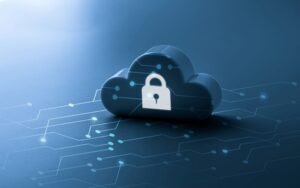Remote work has evolved into the standard operating model for teams worldwide, and its increasing prevalence among organizations comes as no surprise. Today’s workforce is no longer confined to a single physical location, offering companies cost-saving benefits by reducing travel and office expenditures while affording employees a flexible and convenient on-the-go work lifestyle. Over the past decade, businesses have proactively expanded their remote work capabilities.
However, remote access introduces a set of new security risks and vulnerabilities to your infrastructure, necessitating the implementation of advanced security measures. While a business VPN is a robust security solution, it cannot single-handedly address all security concerns. Secure remote access requires a comprehensive approach, combining various security strategies with cutting-edge technologies.
Understanding Secure Remote Access
Secure remote access is a commonly adopted technology, allowing staff members to log in remotely and operate work devices from virtually anywhere. Its applications span various sectors, including healthcare and IT, where professionals utilize it to provide technical support to users without needing physical access to their devices. Maintaining vigilant oversight of the end-user devices gaining access to your corporate infrastructure is paramount to preventing sensitive data compromise.
Efficient and secure remote access solutions can enhance the quality of patient services, often resulting in increased employee productivity. They simplify service delivery, foster collaboration, and streamline troubleshooting processes.
Why Secure Remote Access is Crucial?
The landscape of cybersecurity threats undergoes a significant transformation when employees work remotely. Novel risks emerge, stemming from the reliance on personal computers, routers, and other devices susceptible to malware infiltration, yet challenging for corporate IT teams to monitor and fortify.
Another distinct threat arises from employees’ need to access or transmit data over public internet connections while connecting to systems or storage resources within their organization’s premises. If this data lacks proper security measures, external entities could intercept the connections and steal sensitive information—an endeavor far more challenging within secure corporate networks.
Remote work mandates the adoption of a broader array of tools, amplifying the potential attack surface that malicious actors can exploit. In addition to standard office applications, remote workers commonly deploy tools like RDP and VPN clients, creating fresh avenues for potential security vulnerabilities.
Threats previously confined to traditional office settings can manifest in novel ways or on a larger scale in work-from-home scenarios. For instance, phishing attacks are not exclusive to remote employees, but they may be executed more seamlessly when individuals are outside the office, potentially less vigilant about security threats and relying on personal devices to access corporate resources.
Similarly, malware attacks pose an elevated risk when employees operate from personal devices, which are less likely to receive timely software patches against the latest security threats compared to company-owned devices managed and updated by professional IT teams.
While remote work offers undeniable benefits and may be imperative for an organization’s operations, it is evident that it comes with inherent security risks. Nevertheless, companies can effectively manage these risks by adhering to best practices for maintaining the security of their systems and data security, even in remote work scenarios.
Best Practices for Ensuring Secure Remote Access
The widespread availability of cloud technologies and high-speed broadband internet access has ushered in the era of remote work as a viable option for numerous organizations. The allure of flexibility and heightened productivity makes remote work an enticing proposition for both companies and their employees. Nevertheless, from the perspective of IT professionals, remote work presents its unique set of challenges, with security taking center stage.
While remote work promises many benefits, its successful execution hinges mainly on the IT team’s ability to ensure uninterrupted access to services, applications, and resources. Meanwhile, cybercriminals actively seek new attack vectors and surfaces, elevating the importance of a robust security stance. Irrespective of the sophistication of your remote work systems, maintaining an unwavering focus on security is paramount.
Here are some of the best practices to fortify the security of remote access:

Cultivate a Security-Conscious Mindset
The cornerstone of secure remote access lies in acknowledging the presence of potential threats. This fundamental shift in perspective is crucial, mainly for organizations traditionally focused on securing their on-premises infrastructure. It is imperative to recognize that vulnerabilities likely exist within remote access infrastructure, even if they remain concealed.
Ensure Data Encryption
Data encryption consistently ranks as a top security best practice, and its significance is amplified when employees engage in remote work. The potential for devices to be lost beyond the corporate environment or for sensitive data to be intercepted during internet transmission necessitates stringent measures. To address this concern, ensure that all data exchanged between company-owned systems and remote work locations undergo encryption during network transmission.
Establish a Comprehensive Telework Policy
The formulation of clear guidelines for remote work represents another foundational step in mitigating remote access threats. Organizations should craft telework policies delineating key aspects, including the permissibility of using personal devices, data handling, software installation guidelines, and procedures for reporting security incidents when employees work remotely and lack in-person access to the IT team.
Implement User Authentication
Enforce strict access control, including multifactor authentication, when employees access company resources remotely. While granting broad access for resource simplification may seem appealing, it poses substantial security risks. Adopting the principle of least privilege, whereby access is denied by default and granted solely to specific accounts requiring it, is considered best practice.
Secure Remote Work Devices
In an ideal scenario, employees should refrain from using personal devices for remote work, with organizational policy reinforcing this stance. Instead, companies should provide employees with dedicated devices for remote work, centrally managed by the corporate IT team, to ensure timely updates and eliminate unnecessary software or data posing security risks.
Deploy a Business VPN

Virtual Private Networks (VPNs) confer several key advantages, including remote access to otherwise inaccessible resources, encrypted connections, and access control for corporate networks. The deployment of a VPN for teams and the mandate for all remote connections to traverse it represent fundamental best practices for bolstering resource security during remote work.
Foster Effective Collaboration with External Partners

Remote-access scenarios necessitate robust collaboration with third-party partners and vendors, particularly those responsible for remote desktop instances and file servers accessed over the network. These entities play a pivotal role in maintaining system and data security when employees work outside the office.
Select partners and vendors that prioritize remote security, prepared to respond rapidly to emerging threats. Moreover, consider solutions that automate security processes to effectively manage security risks amidst challenges like alert fatigue, overreliance on manual processes, and skills shortages.
Manage Sensitive Data Securely:
Prudent handling of sensitive data is paramount, especially in remote work scenarios. Even if compliance regulations do not dictate data handling, organizations should establish policies governing data copying onto remote devices. This precaution mitigates the risk of sensitive information exposure and safeguards against scenarios where data could be copied to a subsequently lost device, such as a thumb drive.
Wrapping Up
As organizations increasingly embrace remote work, the cybersecurity dynamics are transforming. While remote work brings many advantages, it also ushers in distinct security intricacies that differ from those in office settings.
The above blog lists several best practices for fortifying your remote work environment’s security without compromising flexibility and mobility. Nonetheless, it remains essential to continually align your security protocols with the ever-evolving threat landscape and your internal operational processes.
Is your remote work infrastructure sufficiently fortified against security threats? Are you seeking to bolster your security posture?
Contact us today and discover how we can assist you in meeting your IT security needs.


